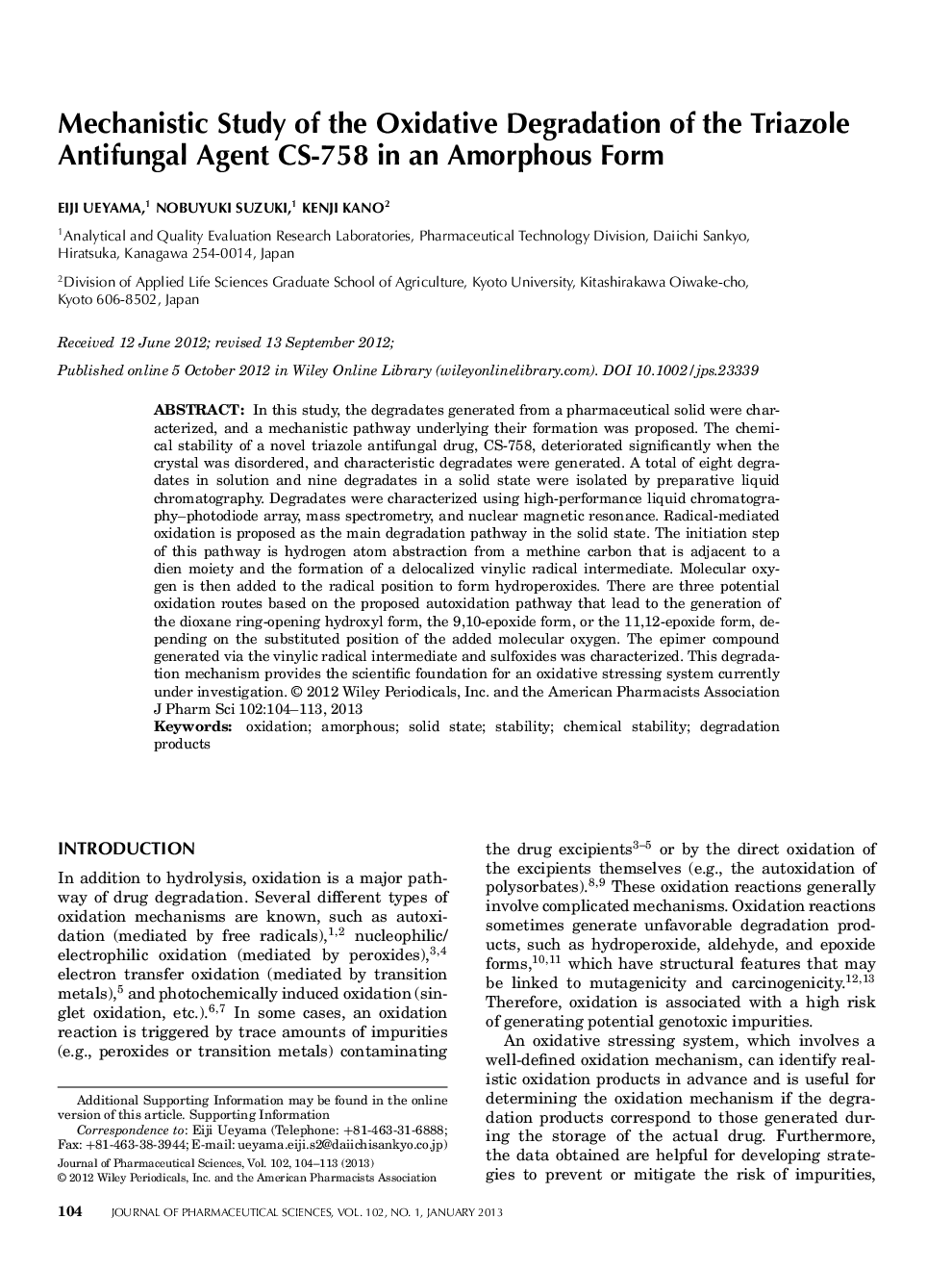| Article ID | Journal | Published Year | Pages | File Type |
|---|---|---|---|---|
| 2485442 | Journal of Pharmaceutical Sciences | 2013 | 10 Pages |
Abstract
In this study, the degradates generated from a pharmaceutical solid were characterized, and a mechanistic pathway underlying their formation was proposed. The chemical stability of a novel triazole antifungal drug, CSâ758, deteriorated significantly when the crystal was disordered, and characteristic degradates were generated. A total of eight degradates in solution and nine degradates in a solid state were isolated by preparative liquid chromatography. Degradates were characterized using highâperformance liquid chromatography-photodiode array, mass spectrometry, and nuclear magnetic resonance. Radicalâmediated oxidation is proposed as the main degradation pathway in the solid state. The initiation step of this pathway is hydrogen atom abstraction from a methine carbon that is adjacent to a dien moiety and the formation of a delocalized vinylic radical intermediate. Molecular oxygen is then added to the radical position to form hydroperoxides. There are three potential oxidation routes based on the proposed autoxidation pathway that lead to the generation of the dioxane ringâopening hydroxyl form, the 9,10âepoxide form, or the 11,12âepoxide form, depending on the substituted position of the added molecular oxygen. The epimer compound generated via the vinylic radical intermediate and sulfoxides was characterized. This degradation mechanism provides the scientific foundation for an oxidative stressing system currently under investigation.
Related Topics
Health Sciences
Pharmacology, Toxicology and Pharmaceutical Science
Drug Discovery
Authors
Eiji Ueyama, Nobuyuki Suzuki, Kenji Kano,
